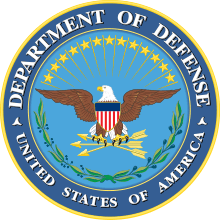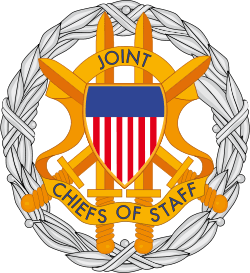Chief of Staff of the United States Army
| Chief of Staff of the United States Army
CSA | |
|---|---|
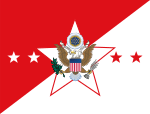 Flag of the Chief of Staff of the Army | |
|
Department of the Army The Army Staff | |
| Member of | Joint Chiefs of Staff |
| Reports to |
Secretary of Defense Secretary of the Army |
| Seat | The Pentagon, Arlington County, Virginia, U.S. |
| Appointer |
The President with Senate advice and consent |
| Term length |
4 years Renewable |
| Constituting instrument | 10 U.S.C. § 3033 |
| Precursor | Commanding General of the Army |
| Formation | 15 August 1903 |
| First holder | LTG Samuel B. M. Young |
| Deputy | Vice Chief of Staff of the Army |
| Website | Official Website |
The Chief of Staff of the Army (CSA) is a statutory office (10 U.S.C. § 3033) held by a four-star general in the United States Army. As the most senior uniformed officer assigned to serve in the Department of the Army, the CSA is the principal military advisor and a deputy to the Secretary of the Army. In a separate capacity, the CSA is a member of the Joint Chiefs of Staff (10 U.S.C. § 151) and, thereby, a military advisor to the National Security Council, the Secretary of Defense, and the President of the United States. The CSA is typically the highest-ranking officer on active-duty in the U.S. Army unless the Chairman and/or the Vice Chairman of the Joint Chiefs of Staff are Army officers.
The Chief of Staff of the Army is an administrative position based in the Pentagon. While the CSA does not have operational command authority over Army forces proper (which is within the purview of the Combatant Commanders who report to the Secretary of Defense), the CSA does exercise supervision of army units and organizations as the designee of the Secretary of the Army.
The current Chief of Staff of the Army is General Mark A. Milley.
Responsibilities
The senior leadership of the Department of the Army consists of two civilians, the Secretary of the Army (Head of the department and subordinate to the Secretary of Defense) and the Under Secretary of the Army, and two military officers, the Chief of Staff of the Army and the Vice Chief of Staff of the Army.
The Chief of Staff reports directly to the Secretary of the Army for army matters and assists in the Secretary's external affairs functions, including presenting and enforcing army policies, plans, and projections. The CSA also directs the Inspector General of the Army to perform inspections and investigations as required. In addition, the CSA presides over the Army Staff and represents army capabilities, requirements, policy, plans, and programs in Joint fora.[1] Under delegation of authority made by the Secretary of the Army, the CSA designates army personnel and army resources to the Commanders of the Combatant Commands.[2] The CSA performs all other functions enumerated in 10 U.S.C. § 3033 under the authority, direction, and control of the Secretary of the Army, or delegates those duties and responsibilities to other officers in his administration in his name. Like the other service counterparts, the CSA has no operational command authority over army forces, dating back to the passage of the Department of Defense Reorganization Act of 1958. The CSA is served by a number of Deputy Chiefs of Staff of the Army, such as G-1, Personnel. The CSA base pay is $21,147.30 per month plus Personal Money Allowance (Monthly Amount) of $333.33, basic allowance for subsistence of $253.38, basic allowance for housing from $50.70–1923.30.
The Chief of Staff of the Army is nominated by the President and must be confirmed by the Senate.[3] By statute, the CSA is appointed as a four-star general.[3]
The Chief of Staff of the Army has an official residence, Quarters 1 at Joint Base Myer–Henderson Hall, Virginia.
The Chief of Staff holds an annual future study program called Unified Quest.[4][5][6]
History
Prior to 1903, the senior military officer in the army was the Commanding General, who reported to the Secretary of War. From 1864 to 1865, Major General Henry Halleck (who had previously been Commanding General) served as "Chief of Staff of the Army" under the Commanding General, Lieutenant General Ulysses S. Grant, thus serving in a different office and not as the senior officer in the army.
The first chief of staff moved his headquarters to Fort Myer in 1908.
List of Chiefs of Staff of the Army (1903–present)
The rank listed is the rank when serving in the office.
| # | Name | Photo | Term began | Term ended | Notes |
|---|---|---|---|---|---|
| 1. | LTG Samuel B. M. Young | 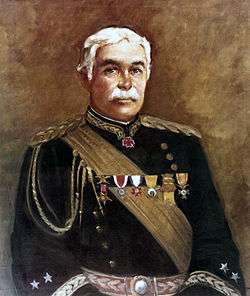 | 15 August 1903 | 8 January 1904 | Retired upon reaching mandatory retirement age of 64. |
| 2. | LTG Adna Chaffee | 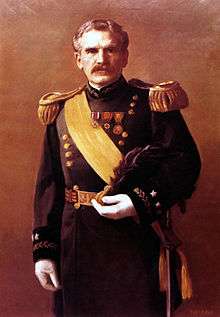 | 19 August 1904 | 14 January 1906 | Resigned position; retired in February at own request, shortly before reaching mandatory retirement age of 64. |
| 3. | LTG John C. Bates |  | 15 January 1906 | 13 April 1906 | Last Civil War veteran to serve as Chief of Staff. Retired in April 1906 at own request, shortly before reaching mandatory retirement age of 64. |
| 4. | MG J. Franklin Bell | 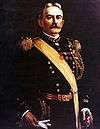 | 14 April 1906 | 21 April 1910 | Commanded several divisions and departments after serving as Chief of Staff. Died while commanding Department of the East shortly after the end of World War I. |
| 5. | MG Leonard Wood | 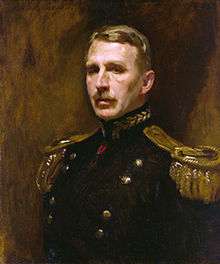 | 22 April 1910 | 21 April 1914 | Commanded divisions and departments, including organizing and training two divisions for combat in World War I. Retired in 1921. |
| 6. | MG William W. Wotherspoon | 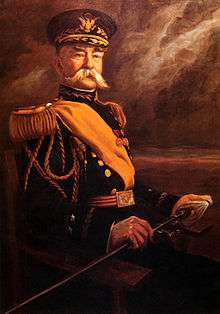 | 22 April 1914 | 16 November 1914 | Retired upon reaching mandatory retirement age of 64. |
| 7. | MG Hugh L. Scott | 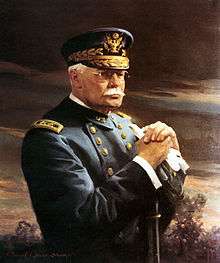 | 17 November 1914 | 22 September 1917 | Retired upon reaching mandatory retirement age of 64. Recalled to active duty for World War I; commanded a division during its organization and training before retiring again in 1919. |
| 8. | GEN Tasker H. Bliss | 23 September 1917 | 19 May 1918 | Retired upon reaching mandatory retirement age of 64 in 1917. Continued on active duty to remain Chief of Staff during World War I; served as U.S. representative on Supreme War Council and as U.S. representative during post-war Paris Peace Conference. Retired again in 1920. | |
| 9. | GEN Peyton C. March |  | 20 May 1918 | 30 June 1921 | Retired at own request in 1921. |
| 10. | GAS John J. Pershing | 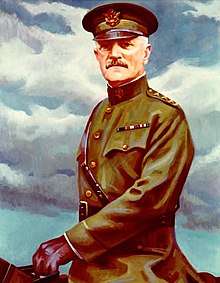 | 1 July 1921 | 13 September 1924 | Last Indian Wars veteran to serve as Chief of Staff. Retired from active military service upon reaching age 64 in 1924. |
| 11. | MG John L. Hines | 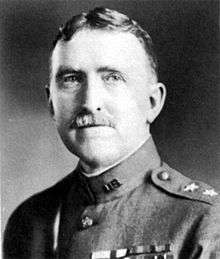 | 14 September 1924 | 20 November 1926 | Commanded IX Corps Area and Department of the Philippines; retired upon reaching mandatory retirement age of 64 in 1932. |
| 12. | GEN Charles P. Summerall | 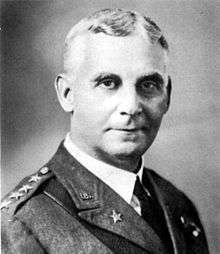 | 21 November 1926 | 20 November 1930 | Last Spanish–American War veteran to serve as Chief of Staff. Placed on extended leave until reaching mandatory retirement age of 64 in 1931. |
| 13. | GEN Douglas MacArthur | 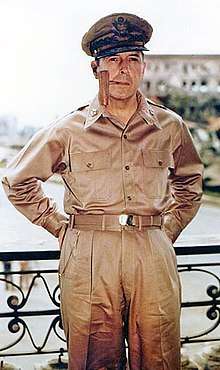 | 21 November 1930 | 1 October 1935 | Supervised creation of the Philippine Army. Retired in 1937, and continued to serve in the Philippines as military advisor to the president. Recalled to active duty in 1941; led defense of the Philippines during World War II, and then commanded South West Pacific Area. Served as Supreme Commander for the Allied Powers in occupied Japan, and led initial U.S. and UNC effort during Korean War. Relieved of command and retired from active military service in 1951. |
| 14. | GEN Malin Craig |  | 2 October 1935 | 31 August 1939 | Retired upon reaching mandatory retirement age of 64 in 1939; recalled to active duty for World War II as head of the War Department Personnel Board. |
| 15. | GA George C. Marshall | 1 September 1939 | 18 November 1945 | Attained mandatory retirement age of 64 in 1944, but continued to serve as Chief of Staff. Relieved from active military duties in November 1945. | |
| 16. | GA Dwight D. Eisenhower | 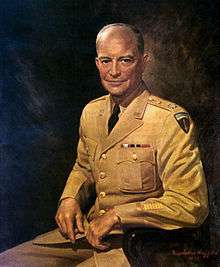 | 19 November 1945 | 6 February 1948 | Relieved from active military duties in 1948. Recalled to active duty in 1951 to serve as first Supreme Allied Commander Europe. Retired in May 1952 upon becoming a candidate for President of the United States. Returned to the active rolls as a General of the Army in 1961, with no assigned duties. |
| 17. | GEN Omar Bradley | 7 February 1948 | 15 August 1949 | Resigned to become first Chairman of the Joint Chiefs of Staff on 19 August 1949. Promoted to General of the Army on 22 September 1950. Relieved as CJCS on 15 August 1953. | |
| 18. | GEN J. Lawton Collins | 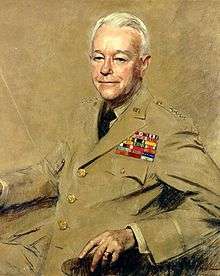 | 16 August 1949 | 14 August 1953 | US Representative to NATO from 1953 to 1954. Special representative of the United States in Vietnam from 1954 to 1955. US representative to NATO from 1955 until reaching mandatory retirement age of 60 in 1956. |
| 19. | GEN Matthew B. Ridgway |  | 15 August 1953 | 29 June 1955 | Last World War I veteran to serve as Chief of Staff. Retired in June 1955, declining age waiver that would have allowed him to complete full term. |
| 20. | GEN Maxwell D. Taylor | 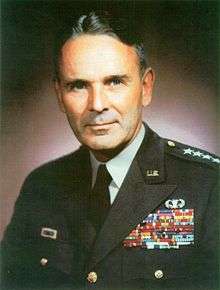 | 30 June 1955 | 30 June 1959 | Retired in 1959. Recalled to active duty in 1961 to serve as Military Representative to the President. Chairman of the Joint Chiefs of Staff, 1962 to 1964. Retired in 1964 to become United States Ambassador to South Vietnam. |
| 21. | GEN Lyman L. Lemnitzer | 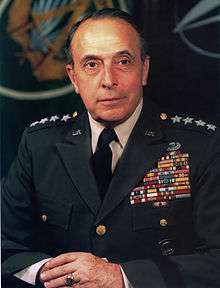 | 1 July 1959 | 30 September 1960 | Chairman of the Joint Chiefs of Staff, 1960 to 1962. Supreme Allied Commander of NATO, 1963 to 1969. Retired upon reaching mandatory retirement age of 60 in 1969. |
| 22. | GEN George H. Decker | 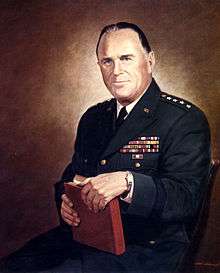 | 1 October 1960 | 30 September 1962 | Retired upon reaching mandatory retirement age of 60 in 1962. |
| 23. | GEN Earle G. Wheeler | 1 October 1962 | 2 July 1964 | Chairman of the Joint Chiefs of Staff, 1964 to 1970, including waiver to serve beyond mandatory retirement age of 60. Retired in 1970. | |
| 24. | GEN Harold K. Johnson | 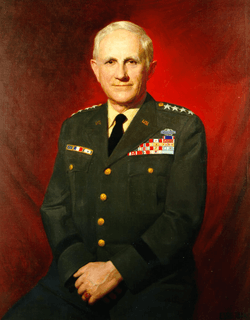 | 3 July 1964 | 2 July 1968 | Retired at end of term. |
| 25. | GEN William C. Westmoreland | 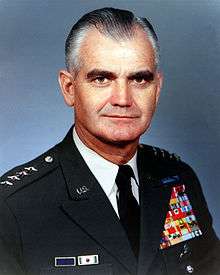 | 3 July 1968 | 30 June 1972 | Retired at end of term. |
| GEN Bruce Palmer Jr. |  | 1 July 1972 | 11 October 1972 | Acting Chief of Staff. Resumed duties as Vice Chief of Staff upon appointment of Creighton W. Abrams as Chief of Staff. Commander, United States Readiness Command, 1973 to 1974. Retired in 1974. | |
| 26. | GEN Creighton W. Abrams | 12 October 1972 | 4 September 1974 | Died in office. | |
| 27. | GEN Frederick C. Weyand |  | 3 October 1974 | 30 September 1976 | Retired upon reaching mandatory retirement age of 60. |
| 28. | GEN Bernard W. Rogers |  | 1 October 1976 | 21 June 1979 | Last World War II veteran to serve as Chief of Staff. Supreme Allied Commander Europe, 1979 to 1987, including waiver to continue service past age 60. Retired in 1987. |
| 29. | GEN Edward C. Meyer | 22 June 1979 | 21 June 1983 | Last Korean War veteran to serve as Chief of Staff. Retired at end of term. | |
| 30. | GEN John A. Wickham Jr. | 23 July 1983 | 23 June 1987 | Retired at end of term. | |
| 31. | GEN Carl E. Vuono | 23 June 1987 | 21 June 1991 | Retired at end of term. | |
| 32. | GEN Gordon R. Sullivan | 21 June 1991 | 20 June 1995 | Retired at end of term. | |
| 33. | GEN Dennis J. Reimer | 20 June 1995 | 21 June 1999 | Retired at end of term. | |
| 34. | GEN Eric K. Shinseki | 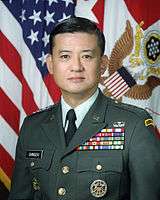 | 21 June 1999 | 11 June 2003 | Last Vietnam War veteran to serve as Chief of Staff. Retired at end of term. |
| 35. | GEN Peter J. Schoomaker |  | 1 August 2003 | 10 April 2007 | Retired in 2000. Recalled to active duty to serve as Chief of Staff. Retired again at end of term. |
| 36. | GEN George W. Casey Jr. |  | 10 April 2007 | 10 April 2011 | Retired at end of term. |
| 37. | GEN Martin E. Dempsey |  | 11 April 2011 | 7 September 2011 | Term shortened due to appointment as Chairman of the Joint Chiefs of Staff.[7] |
| 38. | GEN Raymond T. Odierno | 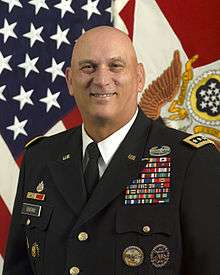 | 7 September 2011 | 14 August 2015 | Retired at end of term. |
| 39. | GEN Mark A. Milley | 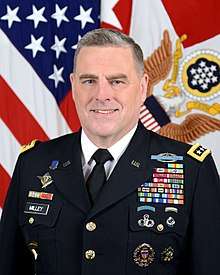 | 14 August 2015 | Incumbent |
See also
References
- ↑ "General George Casey - Chief of Staff Army". Archived from the original on 11 September 2007. Retrieved 22 September 2007.
- ↑ Law.cornell.edu, 10 USC 165. Combatant commands: administration and support
- 1 2 Law.cornell.edu, 10 USC 3033. Chief of Staff
- ↑ "Unified Quest (UQ)."
- ↑ "Unified Quest 2012."
- ↑ "Unified Quest 2011 Combined Arms Maneuver and Wide Area Security Tabletop Wargame."
- ↑ Historical Resources Branch, United States Army Center of Military History
- Bell, William Gardner (2005) [1983]. "Appendix B: Chronological List of Senior Officers of the United States Army". Commanding Generals and Chiefs of Staff 1775-2005: Portraits & Biographical Sketches of the United States Army's Senior Officer. United States Army Center of Military History. ISBN 0-16-072376-0. CMH Pub 70-14.
Further reading
- Bell, William Gardner (2005). Commanding Generals and Chiefs of Staff 1775-2005:Portraits & Biographical Sketches of the United States Army's Senior Officer. Washington, D.C.: United States Army Center of Military History. ISBN 0-16-072376-0. CMH Pub 70–14.
- Watson, Mark Skinner. Chief of Staff: Prewar Plans and Preparations. United States Army in World War II. Washington D.C.: United States Army Center of Military History. - full text
External links
- The short film Big Picture: Top Soldier is available for free download at the Internet Archive

